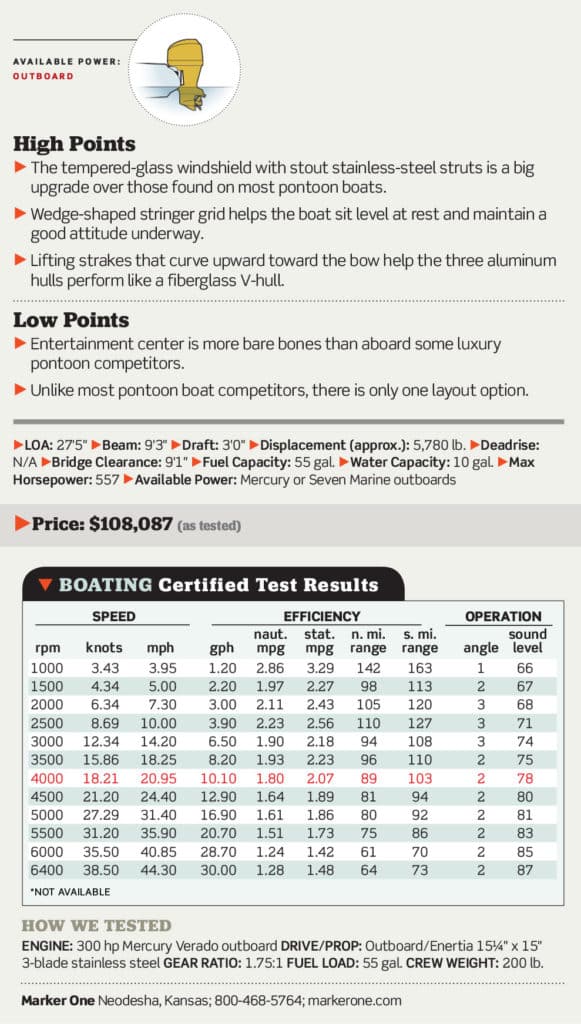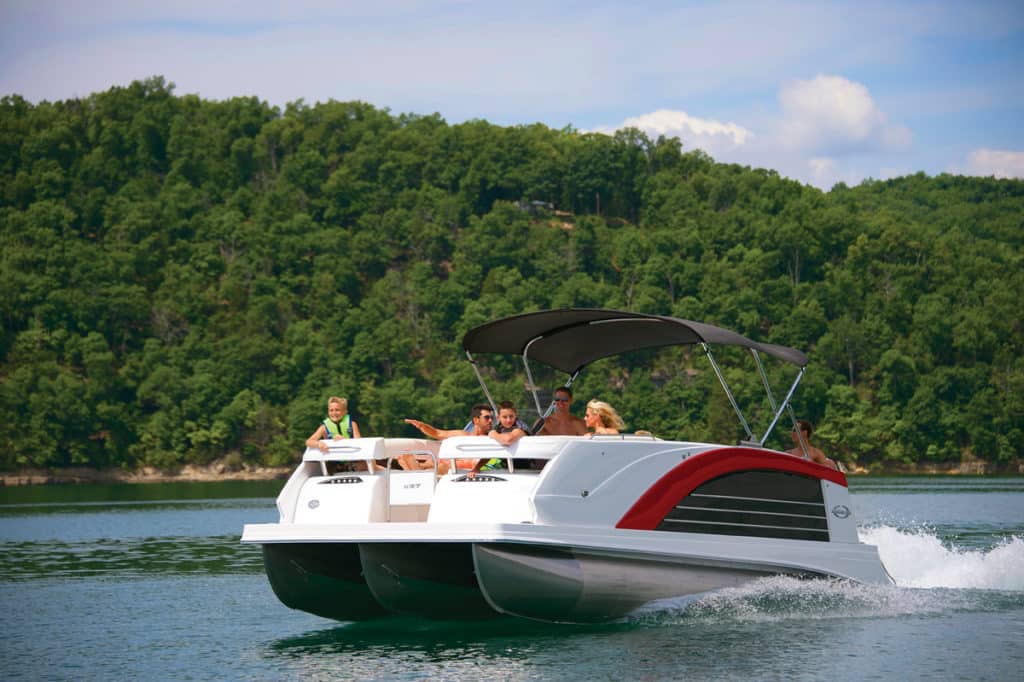
Beam: 9’3″
Dry Weight: 5,780 lb.
Seating Capacity: 14
Fuel Capacity: 55 gal.
More Information: markerone.com
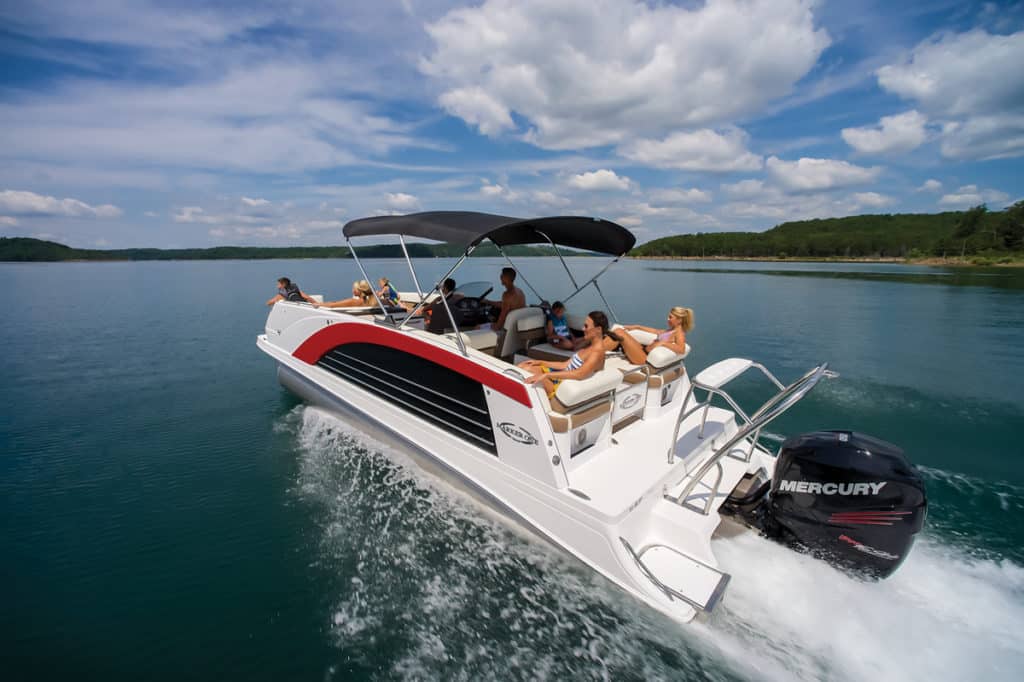
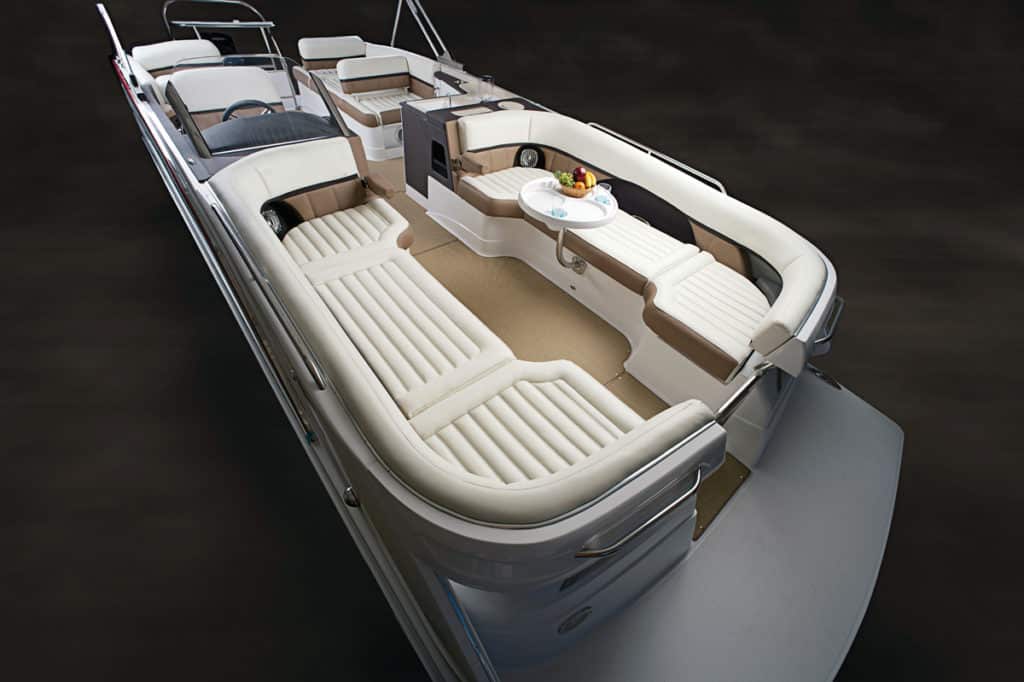
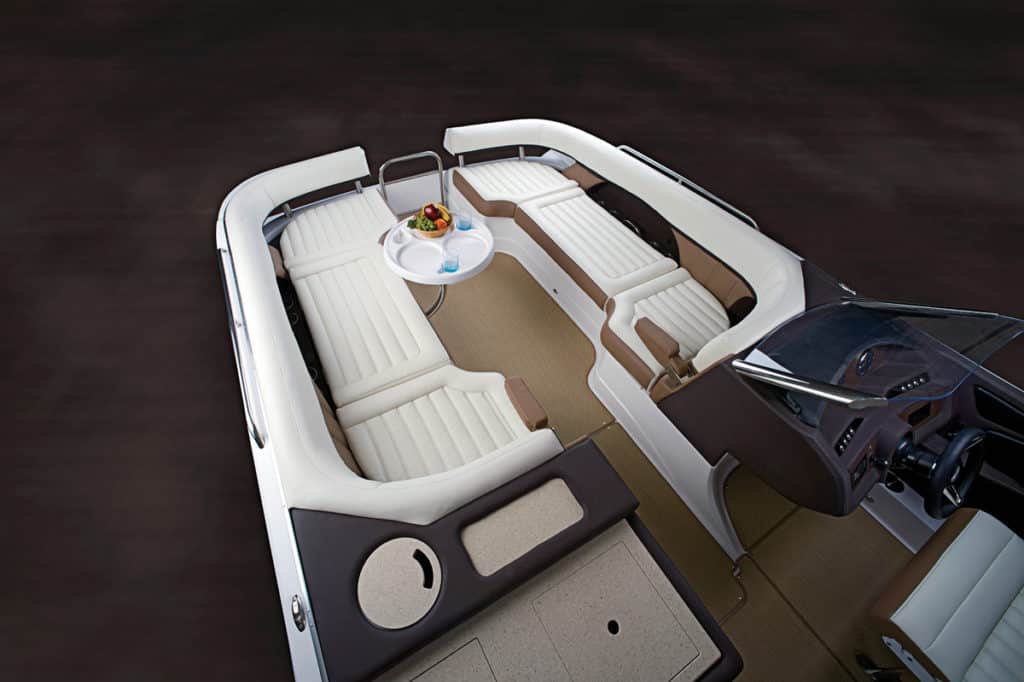
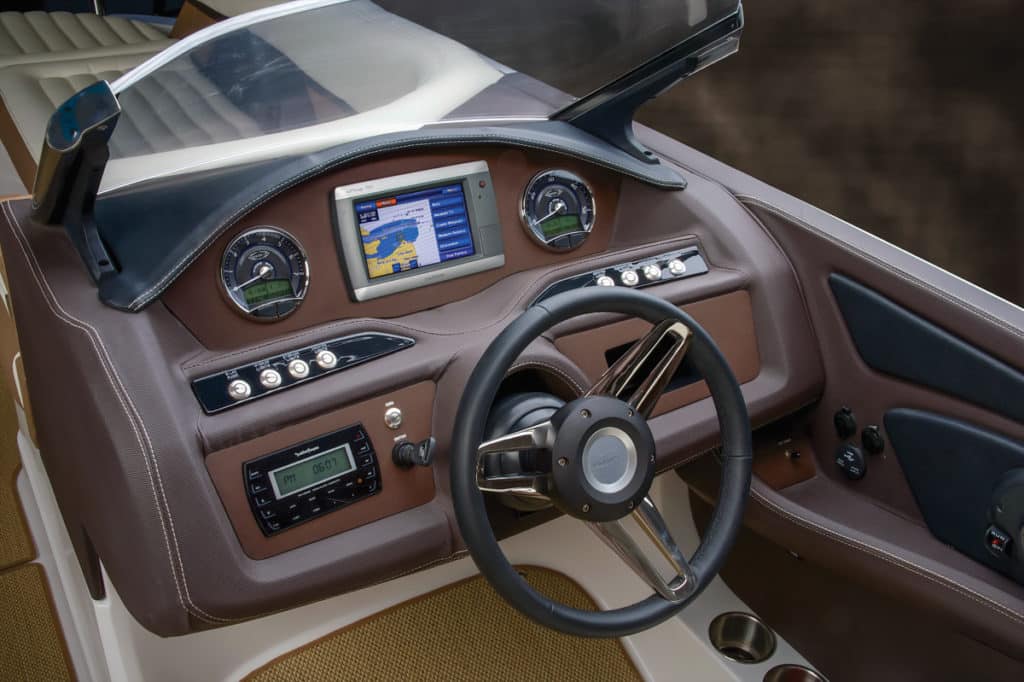
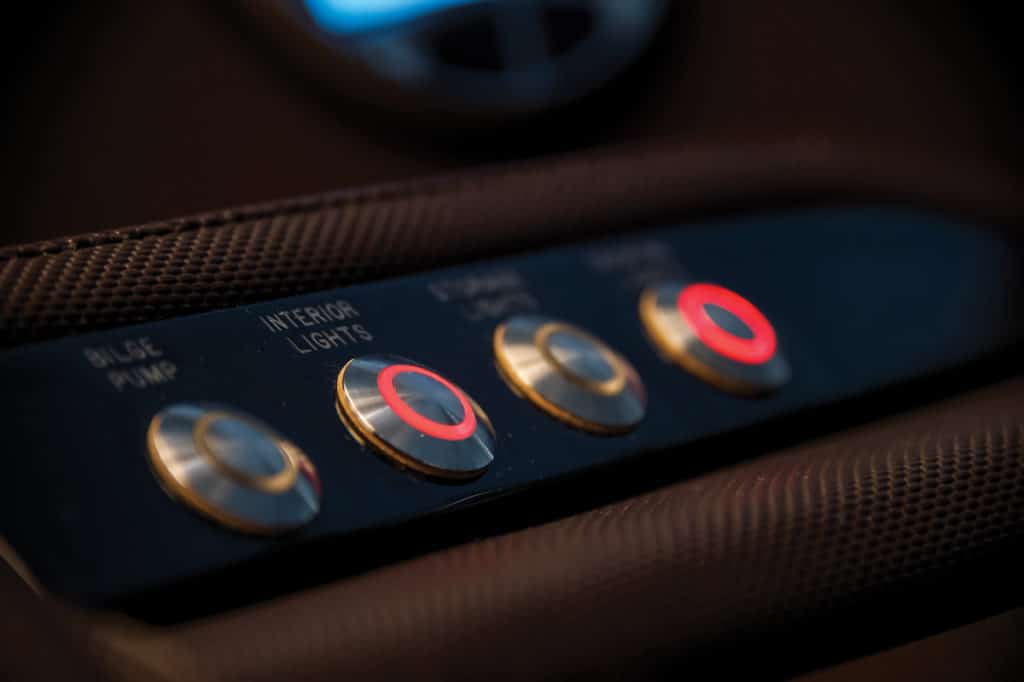
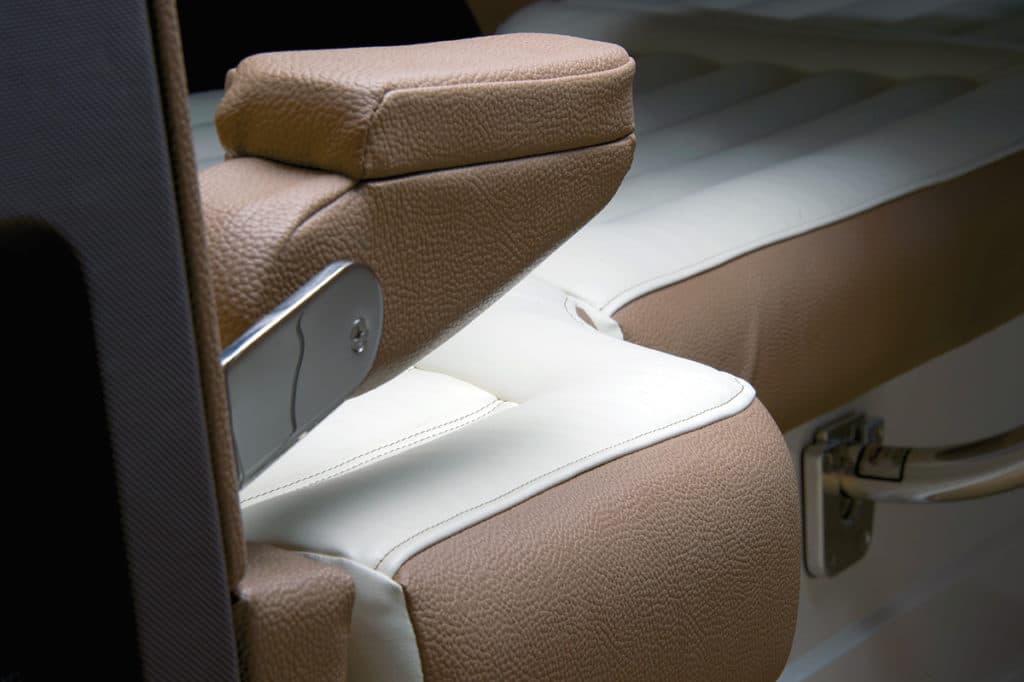
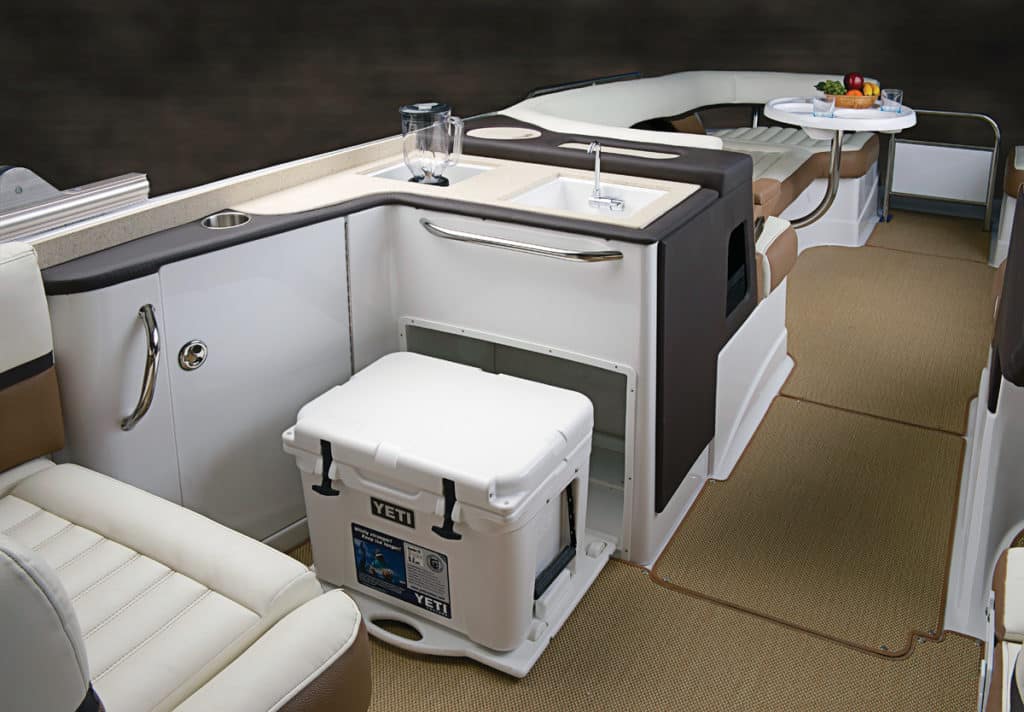
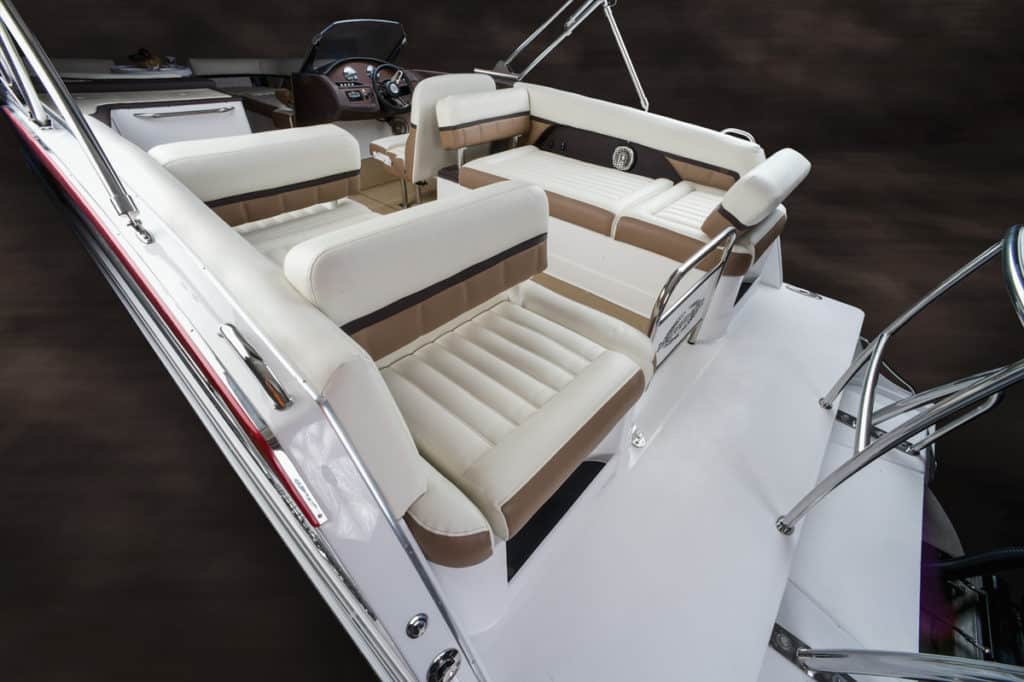
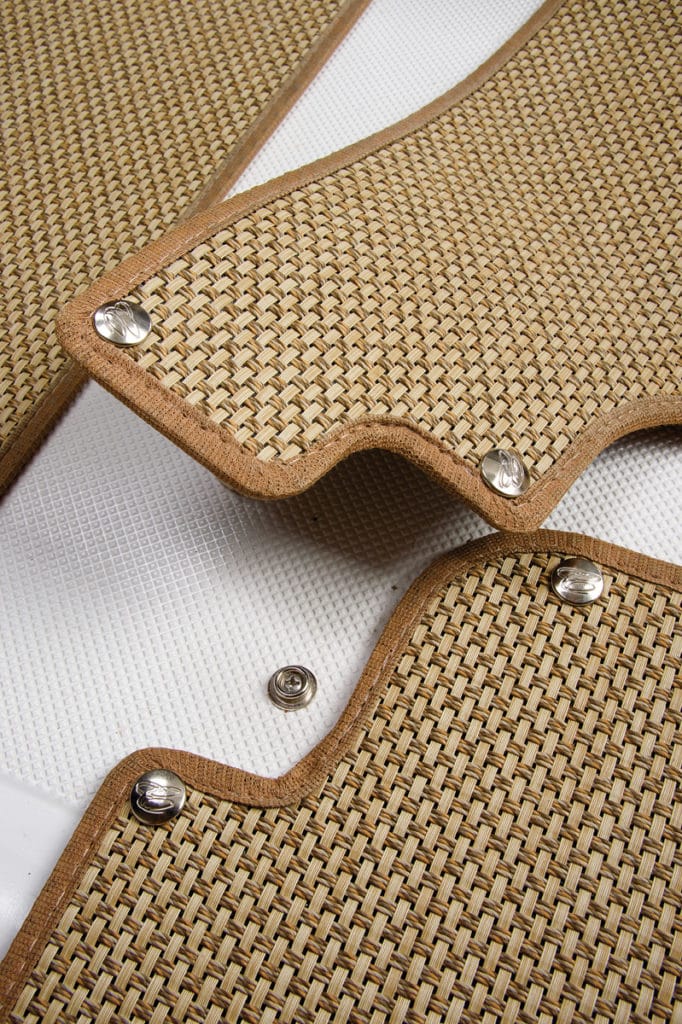
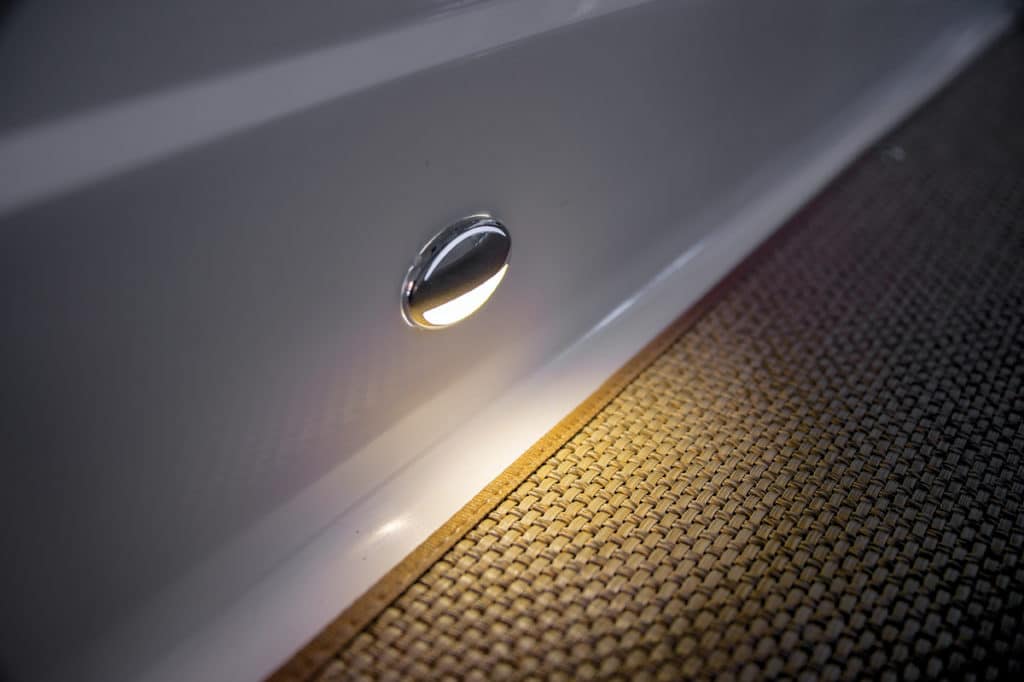
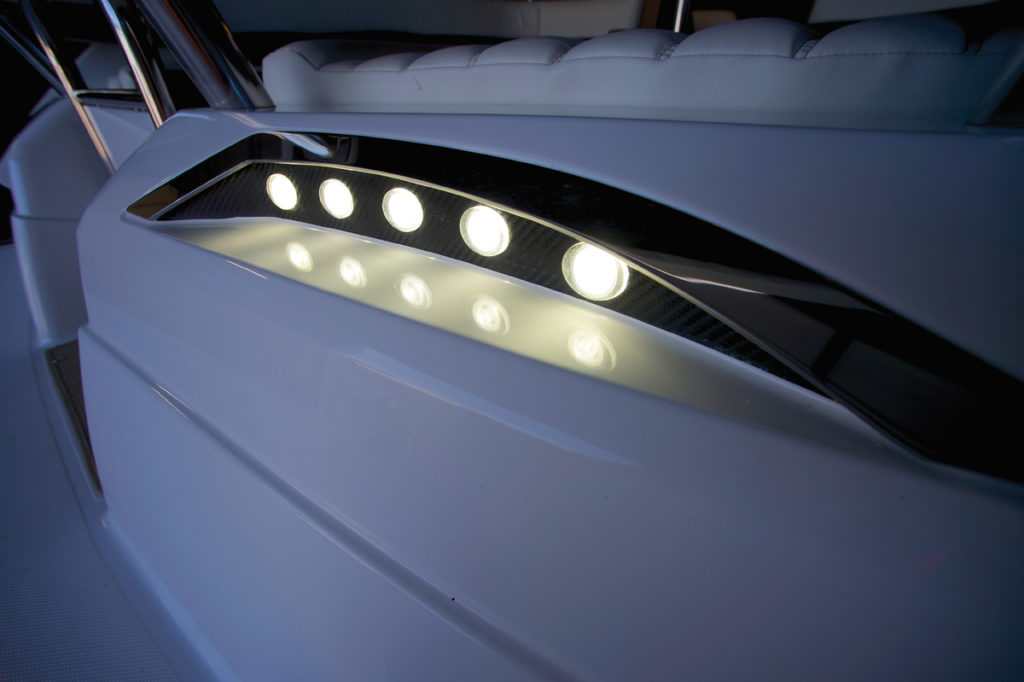
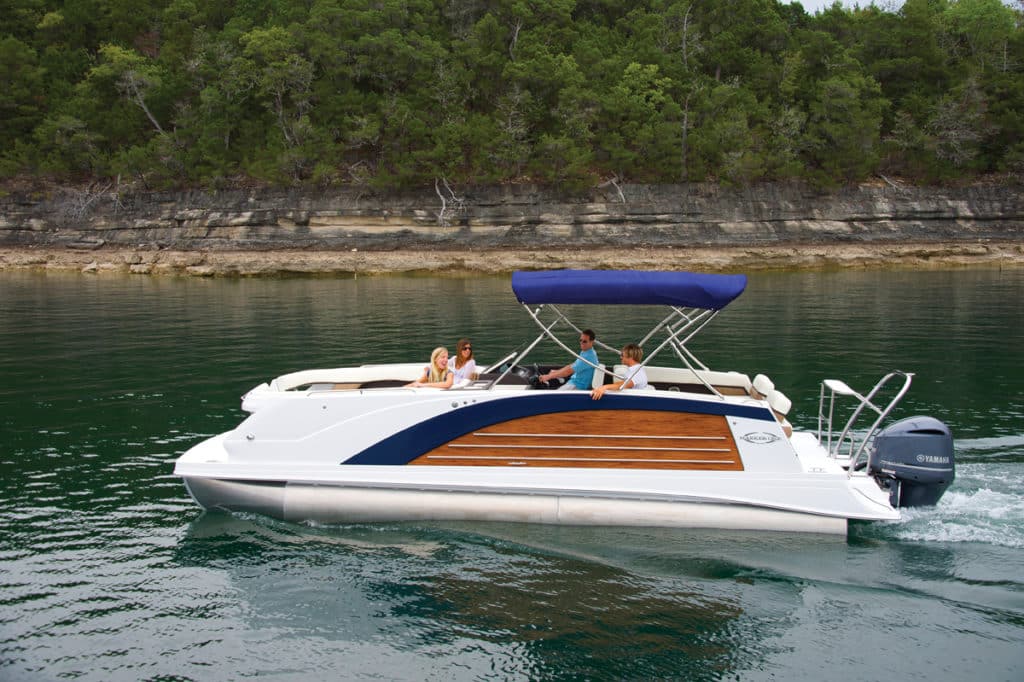
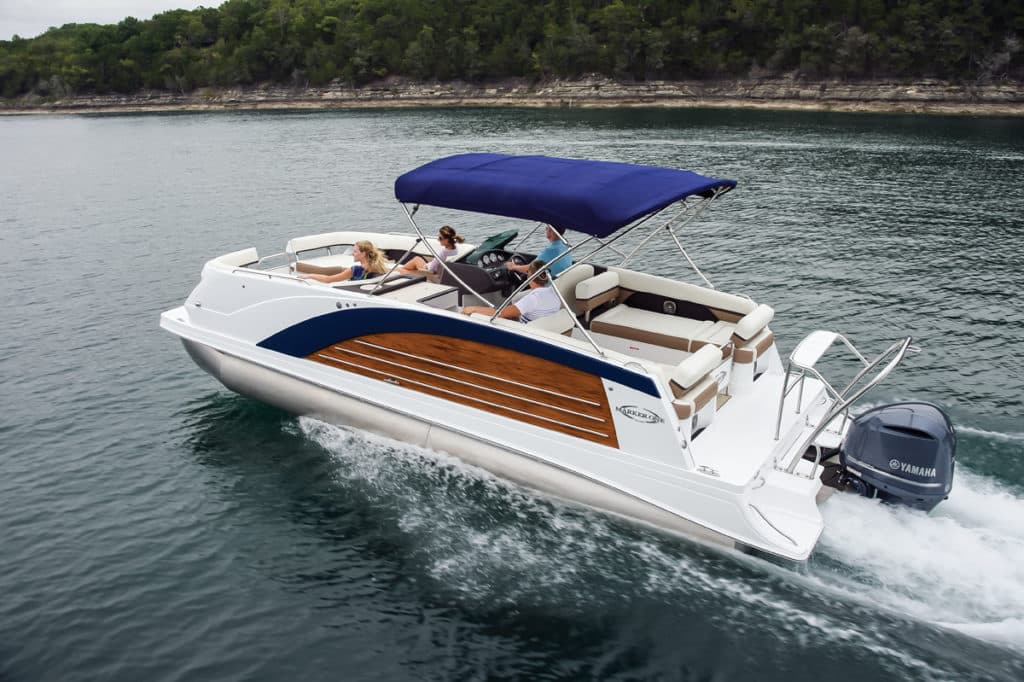
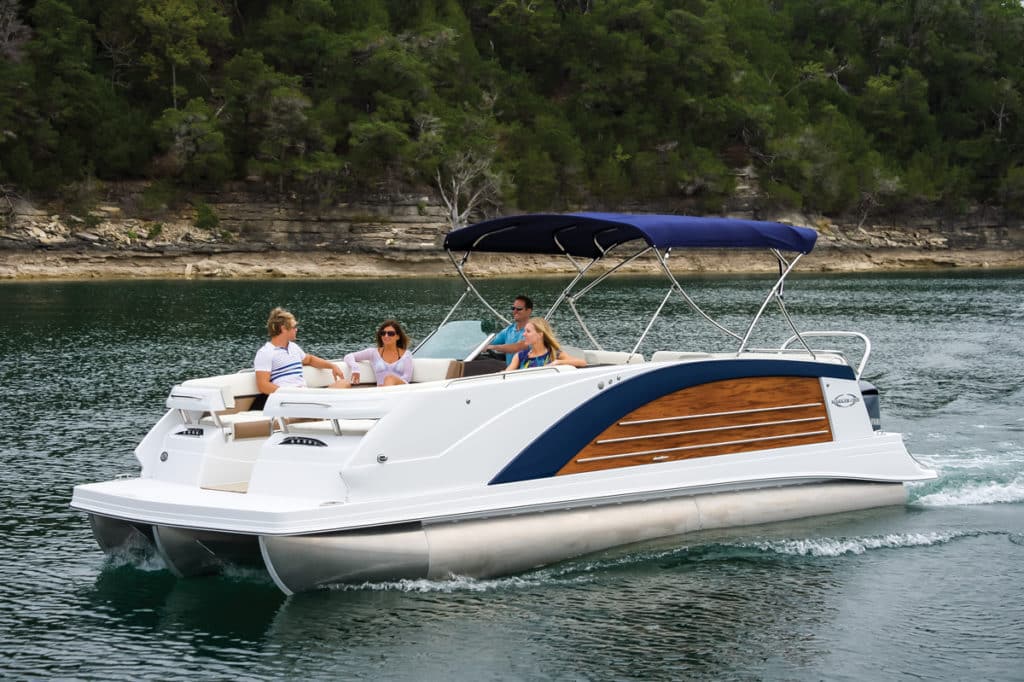
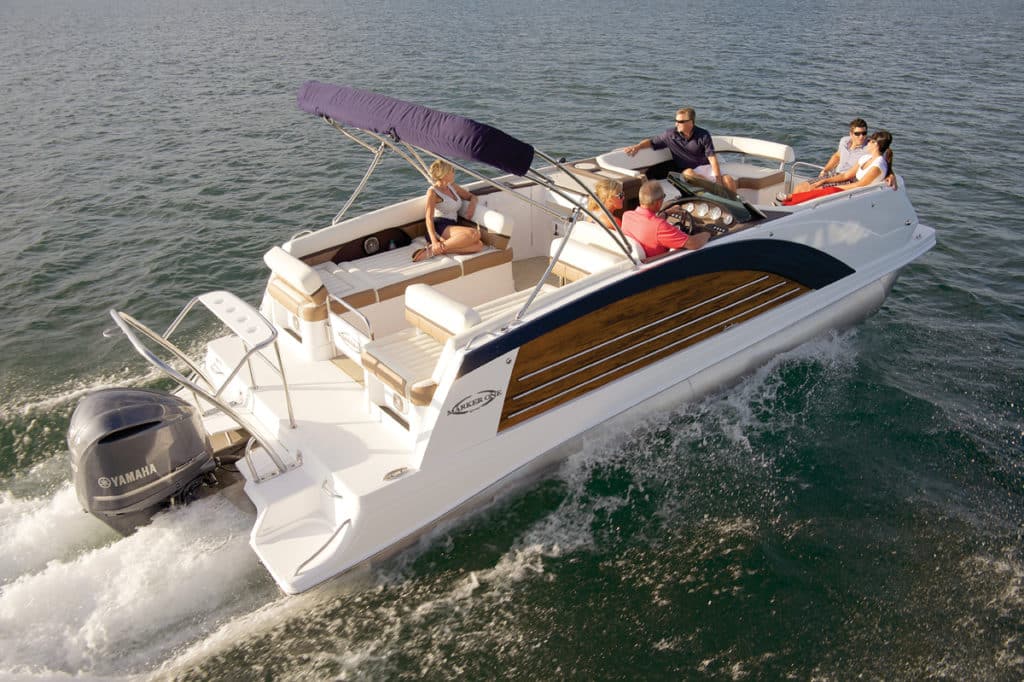
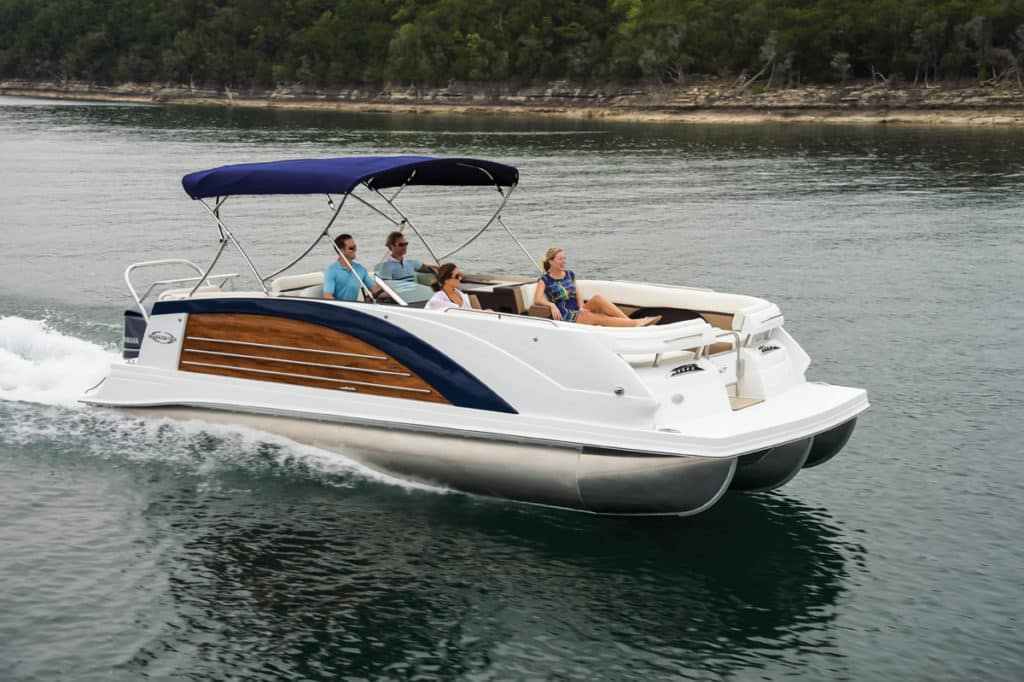
The new Marker One Platform Series M27 looks like a pontoon boat, but don’t call it one. Even though it’s based upon three aluminum hulls that a pontoon aficionado might call tubes (or logs), Marker One — a division of Cobalt Boats — has its own name for the style: a platform boat. Hence “Platform Series” in the name of the lineup that as of now also includes a 25-foot version. The thing is that Marker One has so many innovations on board the M27 that it can invent its own category. It’s that different.
Start with the fact that the M27 has an entirely fiberglass deck. There are pontoon builders that use fiberglass components, most notably Harris with its Crowne 250 ($81,219 with a 300 hp Mercury Verado Pro), but the M27 is all molded glass from the stringers on up. The design actually has three patents pending.
The first patent pending has to do with how Marker One joins the fiberglass deck to the aluminum hulls. The deck is a solid 2 inches thick, which makes for terrific structural integrity while dampening noise from underneath. The second patent pending deals with the aluminum hulls. All three have aft lifting pads as well as lifting strakes that curve upward toward the nose cone. The strakes help the boat generate lift and lean inboard while turning, reminiscent of how a V-hull would turn. The third patent pending is for the wedge-shaped stringer system. It’s thickest point is at the transom, and it tapers to the bow, which helps the boat sit level and creates a better running attitude.
On test day, the stability and level attitude were obvious at the dock. While a large outboard like the 300 hp Mercury Verado can cause some pontoons to sink in a little aft, the M27 sat completely level. Further corroboration came in the form of a sister M27 we did not test that had a Seven Marine 557 outboard that weighs 1,094 pounds on its transom, yet sat completely level in its slip.
That attitude bore itself out underway, as the boat hopped onto plane without any serious bow rise to impede vision at the helm, never climbing above three on our inclinometer readings. It should be noted that some pontoon boats of similar dimensions but lighter dry weights plane instantaneously, but for a heavier fiberglass rig, the numbers are excellent. The planing pads and lifting strakes also contributed to the hole shot, and the hulls’ running surface helped the boat lean inboard on hard-over turns like a V-hull, as opposed to the disconcerting outboard lean experienced aboard some pontoons.
There are luxury pontoons with performance packages that display V-hull characteristics, such as Premier’s 270 Intrigue ($143,842 with twin 300 hp Evinrude E-TEC G2s). With the optional PTX package, which adds the third tube, the 270 Intrigue is capable of comparable performance numbers. So is the slightly smaller Manitou 25 Legacy SRS SHP ($79,300 with an Evinrude 300 E-TEC G2). With the new 300 hp Evinrude, the Manitou hit 52.3 mph.
But as mentioned, the M27’s all-fiberglass deck makes it unique. It’s fiberglass, but it carries its 9-foot-3-inch beam all the way forward like a pontoon, giving it an interior space advantage over a large V-hull deck boat such as the new Sea Ray 270 Sundeck OB ($96,453 with a 300 hp Mercury Verado), which has a trailerable 8-foot-6-inch beam and a more traditional dual-console array.
As Marker One is part of the Cobalt Boats family, its layout has the well-designed features and high level of fit and finish we’ve noted in the course of decades of testing Cobalts. A ski tow bar on the transom elevates the tow rope above the outboard for water sports. The rattle-free boarding gate is constructed with 1¼-inch-thick stainless-steel piping. The rear gate is flanked by twin rumble seats with backrests that can be converted to face aft. The rear seating features opposing couches with cushions that flip out on hinges so you don’t have to hold them up to access the cavernous stowage underneath. Either side can be used as a rear-facing lounge, and the backrest on the port side can be flipped to create a double-wide, forward-facing seat in front of the entertainment center. That features faux granite counters, a removable cooler and trash receptacle, a freshwater sink and even a dedicated spot for storing and operating a blender. It’s more than enough for entertaining, though some pontoon boats go all out on that front with full bars and rotating pedestal bar stools. Though not many boats can match the M27’s total of 23 cup holders or six 12-volt receptacles.
The helm to starboard features a double-wide seat with a flip-up bolster. The hand-stitched brow protects the gauges from glare, and the tempered glass windshield with thick stainless-steel supports protects the driver from windburn.
In the sole there’s a 7-foot-long finished ski locker located within the central tube that helps make stowage space on board a nonissue. Forward seating is not a problem either, with a wraparound seating arrangement. The forward-facing backrests against the consoles feature flip-down armrests for lounging. Another sturdy boarding gate provides access to the bow platform, which proves great for beaching.
Overall, the new Marker One Platform Series M27 provides a smooth-riding boat with a fiberglass deck that provides a lot of the same benefits that a pontoon boat does. Just don’t call it one, OK?
Comparable Models: Premier 270 Intrigue, Manitou 25 Legacy SRS SHP
